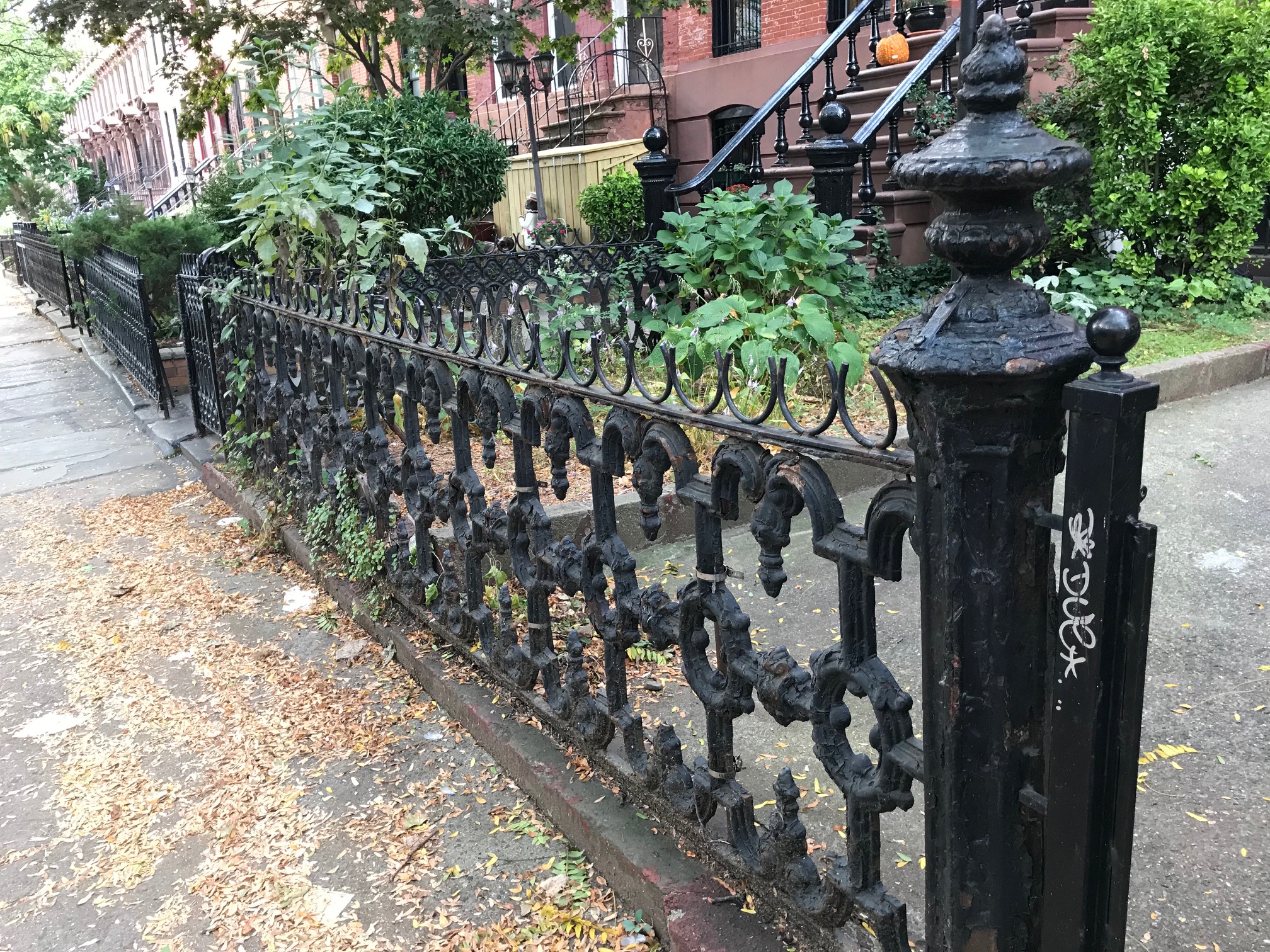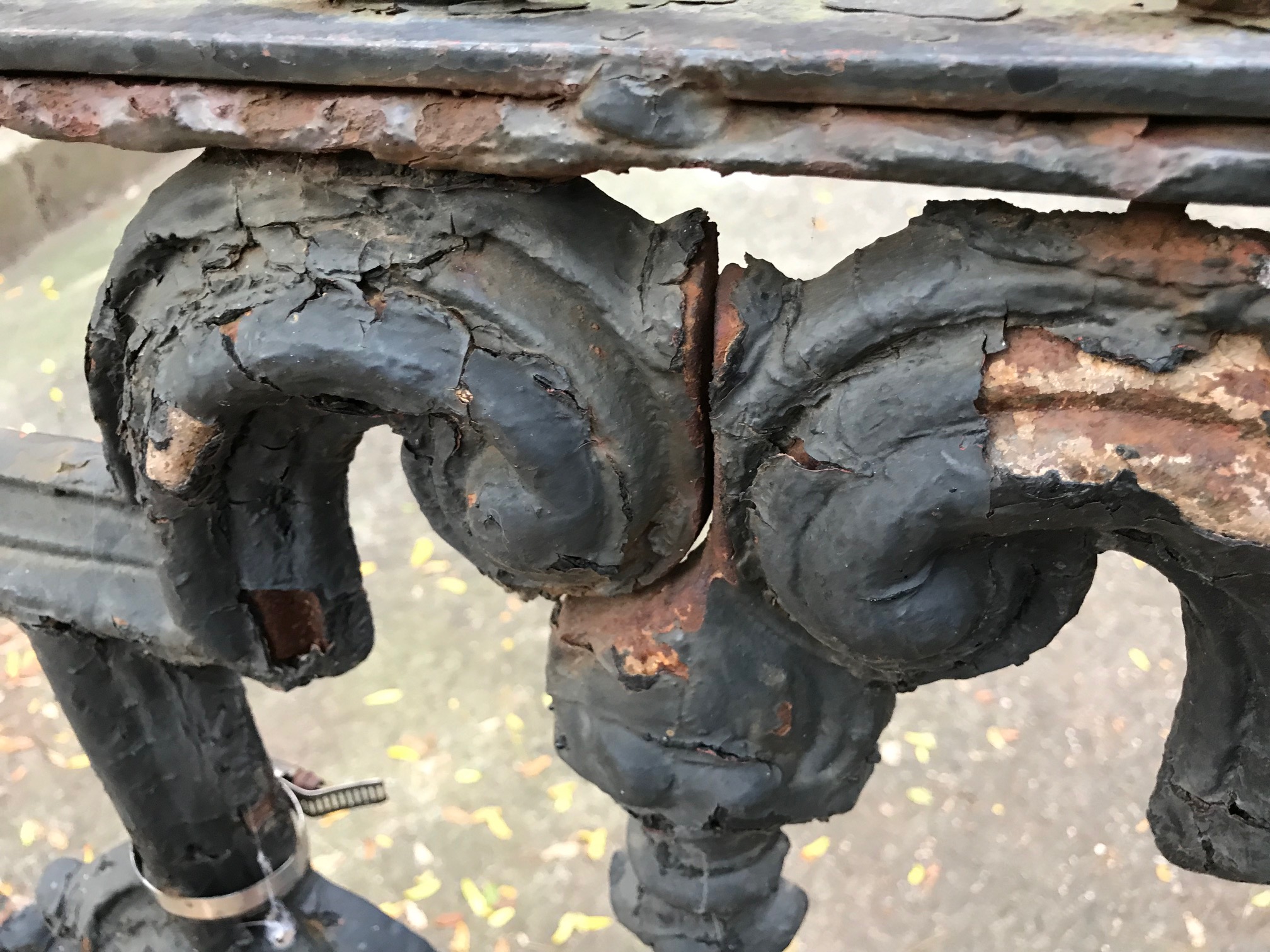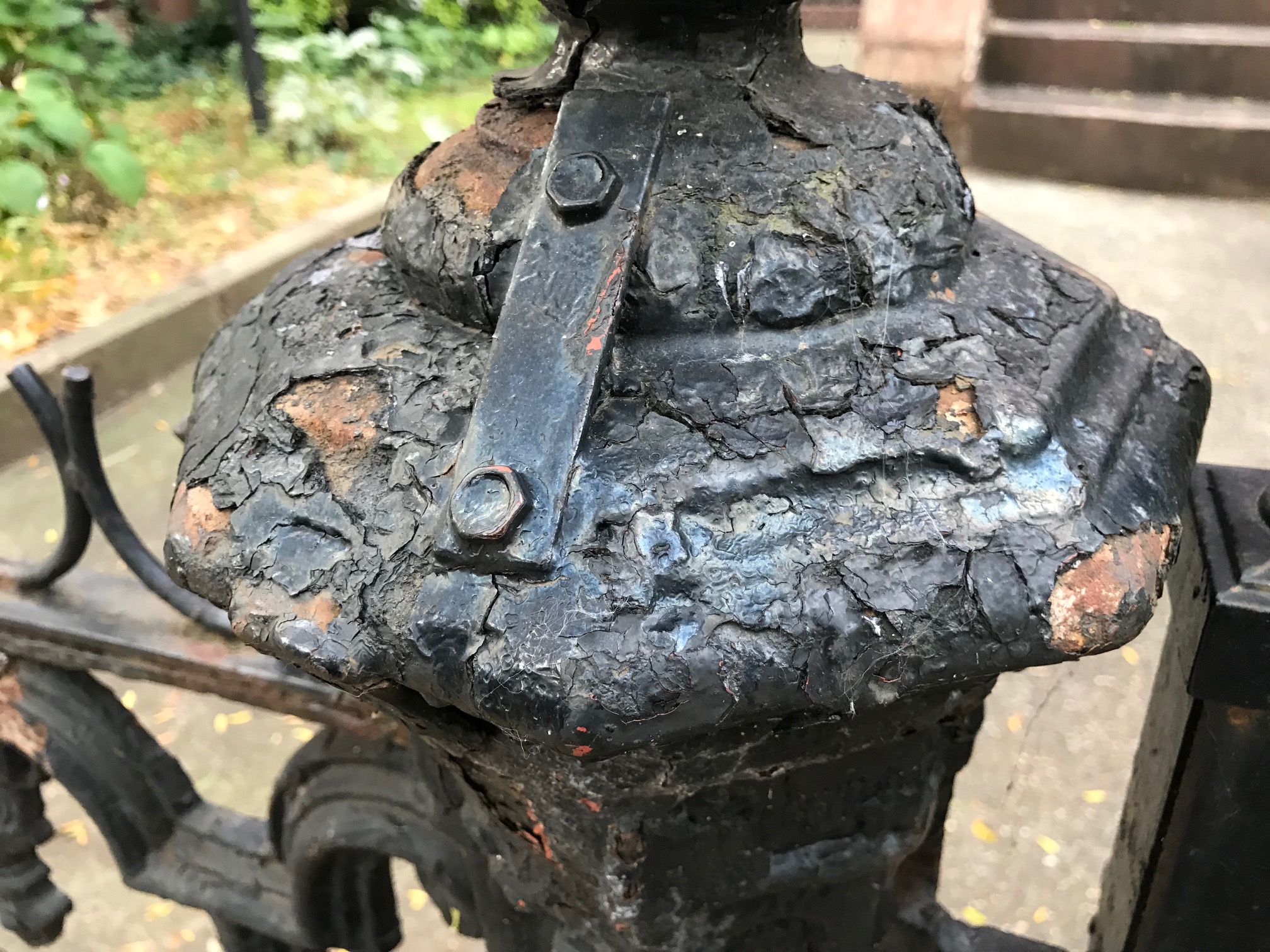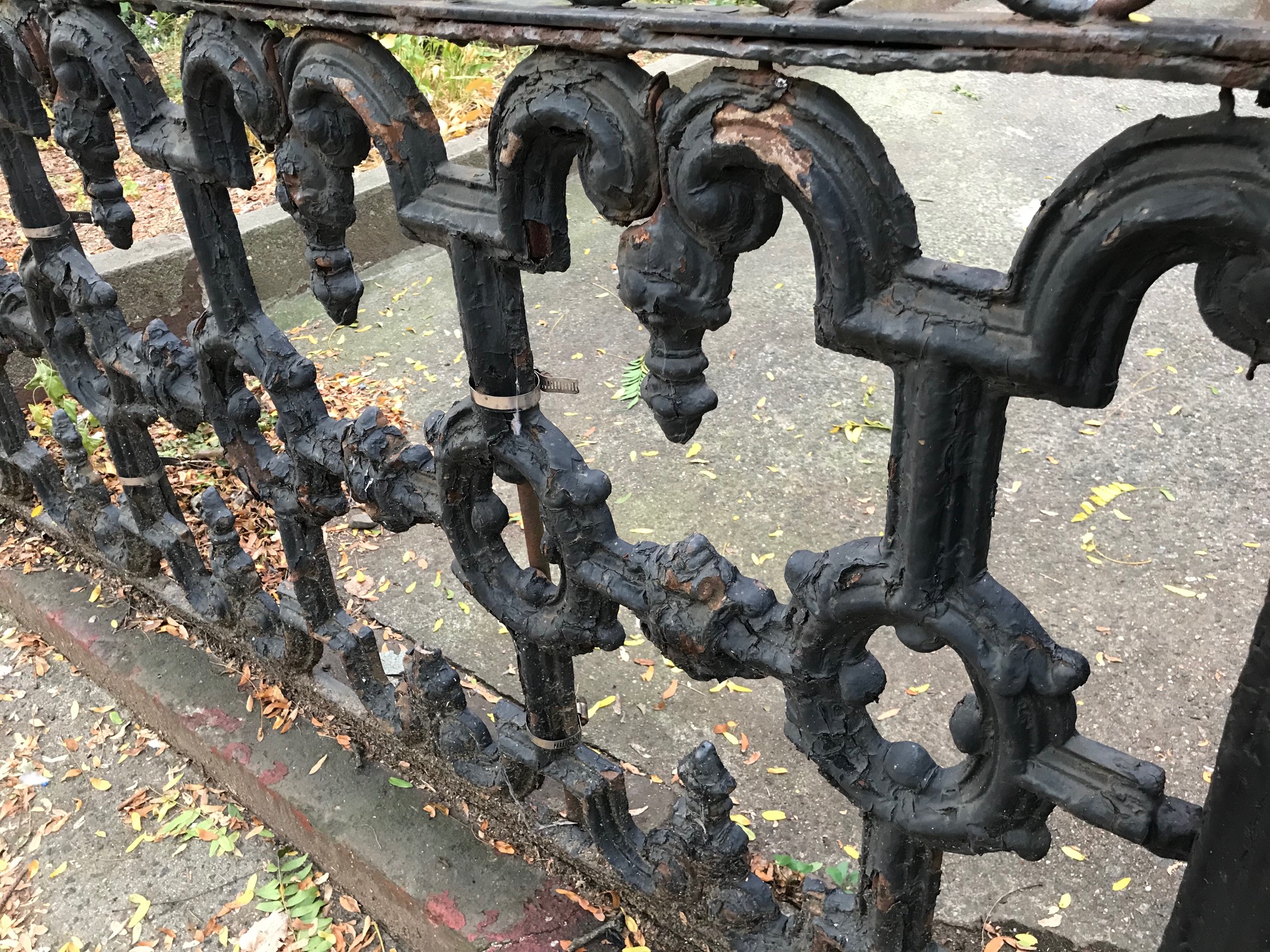How can I tell if the paint on my home is Lead paint? Read this post for close-up images of this Lead painted railing – Brooklyn, NY
Q. What does Lead paint Look like?
Q. How can I tell if peeling paint is Lead paint?
This is just one example of what peeling Lead paint can look like. I will be posting more examples throughout the month (October 2019) – but this is an excellent example of peeling high-Lead paint on the exterior iron railing of a typical brownstone home in Brooklyn, New York.
The XRF reading of the paint on this railing reported the following levels:
- Lead (Pb): 75,300 +/- 1,000 ppm
- Barium (Ba): 1,720 +/- 294 ppm
- Chromium (Cr): 2,988 +/- 251 ppm
- Zinc (Zn): 7,988 +/- 558 ppm
Q. How much Lead is too much Lead?
Q. How much Lead is unsafe in paint?
While all federal agencies currently (in 2019) have crafted language that states in unequivocal terms that there is no safe level of Lead exposure for children, for context let’s look at the 1978 Lead paint ban. The 1978 “ban” on Lead paint did not actually ban Lead from all paint, this legislation only restricted the level of Lead in interior house paint that children could reach. The level that was deemed unsafe with the 1978 ban was anything 600 ppm Lead or higher. Today, modern house paint must be below 90 ppm Lead, and most modern house paint that I have personally tested has been 100% negative for Lead (below the single digit detection limits of an XRF instrument testing in consumer goods mode – the only mode that reads down to those low levels.) Modern items manufactured for use by children (toys, clothing, etc.) must also be below 90 ppm Lead in the paint, glaze or coating. 75,300 ppm Lead is decidedly significantly higher than 90 ppm Lead – and represents a very real hazard to all humans (and any animals!) – not just young children.
To see more examples of Lead paint that are already posted here on the blog, click here.
Q. Where is this?
Q. Is it a problem given it is only outside?
This photo was taken on a block that is part of an historic preservation area (so no signifiant changes are allowed to be made to the exterior of the homes) in October of 2019. Three young children live in this home. Two of these children have already tested positive for Lead. Yet the family has been told by the City that “it is not the Landlord’s responsibility to take care of these hazards as the hazards are not on the interior of the home” (we’ll be fighting this one!)
Q. Are wrought iron railings always painted with Lead paint?
Black wrought iron is often painted with high-Lead-content black paint to preserve it and prevent it from rusting. Even modern (post-1978) iron railings can be found that are painted with paint with high levels of Lead. It is nearly impossible to refinish railings like this (to a degree that you could claim as “Lead-safe” in the long-run), as micro-particulate Lead paint will always remain in the micro pitting of the metal of the railings. These railings are particularly upsetting because every day – in a walk through an area like Historic Brooklyn – you will see young children playing with the railings — hitting them with sticks, climbing on them and otherwise touching them and interacting with them….not to mention that you must touch the gates in order to open and close them when leaving and entering the home (and you are unlikely to consistently wash your hands after touching them on your way out for the day!)
It seems that in even “completely renovated” homes – more often than not – people stop their renovations at the front door — often leaving the most egregious Lead hazards in the outdoor entry spaces to homes! These hazards then create Lead dust which can be easily tracked into the home. This is just ONE reason why it is super important to have a “shoes-off-at-the-door” policy, even though that can present other challenges and exposure risks too.
Thank you for reading and for sharing my posts! Stay safe out there!
Tamara Rubin
#LeadSafeMama

Never Miss an Important Article Again!
Join our Email List








Hi Tamara, we’re looking at moving and one of the houses in question is Spanish style with wrought iron railings for the staircase leading upstairs. In your experience, do wrought-iron fixtures indoors like on staircases also have black paint to reduce rusting? I wasn’t sure if your last Q&A in the article only applied to outdoor wrought iron. Thank you for all of your advocacy!
Yes – they often do. Even the inside ones. Even in newer homes.
Hi!
I tested several areas of the wrought iron railings on my front porch with 3M swabs last year and all came back negative. I have now used the Scitus swabs and several areas came back negative but several are also positive. It was re-painted with white paint when we moved in 3 years ago, before I was aware they could have lead paint.
Any recommendations on how to safely remove them? I know we can wrap them in several layers of plastic but unsure of how to remove them from the concrete they are installed in. After talking with assessors and remediators on the phone, I do not trust them to remove safely. I have 2 young kids who always play on the porch and climb on the railings as I thought they were lead free. luckily they always test <1.
Thank you for all of your work, you are greatly appreciated!
Liz B